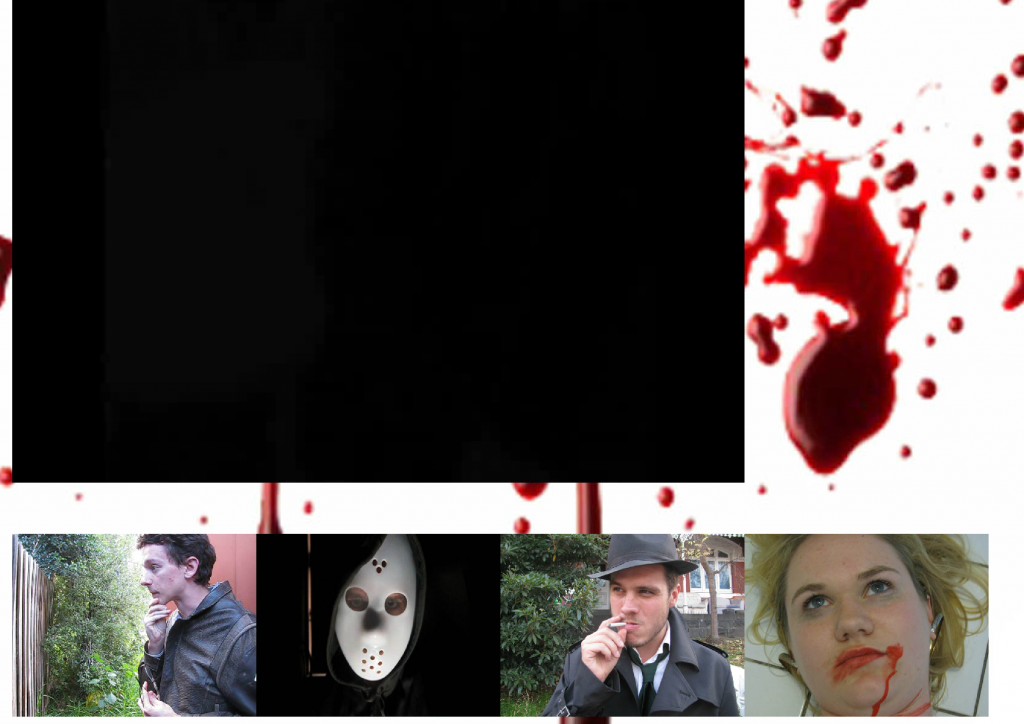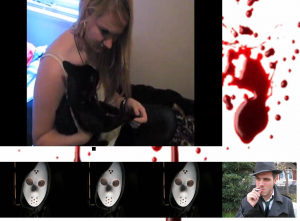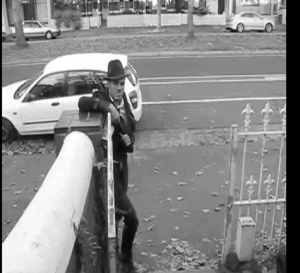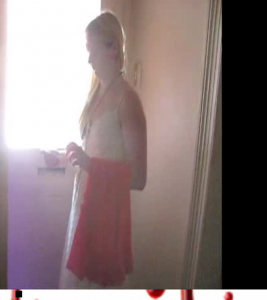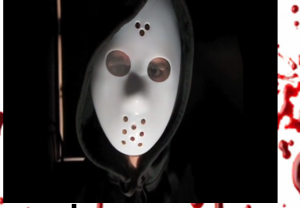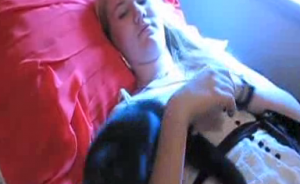k-films are coming up and i’v been enjoying the sketch tasks everyone has been uploading. one of my favourite this week was Tiana’s very cute video about her dog. i believe the constraint was something from the point of view of a pet. this video completely nails that. you don’t see the dog at all but from the moment the video begins you understand what is happening. this is because not only does tiana have the camera on the ground and move like it was a dog but you can hear her dog barking in the background. i was actually convinced that the camera was the dog. then i stopped myself and realised it was just a camera. good work tiana. you had me going there. but it’s a really well shot clip and i really liked it 😀
Monthly Archives: April 2014
how much control does the audience have? – week 5
the big topic in this week’s readings and lecture was the question of how much can we control what the audience interprets from our content? in reality, there are different levels of control that we can have depending on what the story is, how we communicate it and who is receiving it. but overall, you can never really be sure of how an audience will interpret your story or how much of it they will see, read, understand or change.
an interesting article in regards to this discussion is one describing the theory of “Active audiences”. the article/extract, which can be found here (you may need an emit login to view it, sorry) discusses how audience receive and restructure and rebroadcast any media they obtain. audiences are not passive so when we are making our media and our stories and our content, especially in the case of k-films, we must be aware that what we make can be interpreted in absolutely any way. while, as is evident in the article, the level of reinterpretation may vary between audience members, the theory is that every single person will interpret it not only different from the way the producer intended but from the next person to receive the text as well.
living plants – week 5
so, in my usual troll of everyone else’s blogs for ideas, i came across bec’s video responses to this week’s constraints.
her video of light from the perspective of a plant is rally enjoyable video that succeeds in making me understand how this plant views light. it’s a simple, static shot of a tree in the sunlight but the many different elements that combine to make this video are what make it feel so alive.
first off, the screen is filled with plants, the leaves of the tree in focus, it’s branches. but also the leaves of a wall of vines in the background. the plants are the main characters in this video. however, they are not the focus. the focus is the light coming from the sun. the bright light shining onto out main plant is contrasted against the plant in the background who is in shadow and this makes the light seem so much brighter. the light also flickers and glows as the leaves move in the winder, making both the light from the sun and the plants themselves feel really alive and in sync together. however, the best element of the video, which ties the others together, is the music playing in the background. it completely lifts the video, giving the plant a personality and emotions and really shows how the plant feels about the light.
great video bec 😀
film/tv test 3 – question 3
From the week 4 lecture describe at least two reasons why we ‘shoot to edit’?
two reasons why we “shoot to edit” are control/continuity and timing.
shooting a film in chronological order (going by the storyboard) is a very time consuming process. certain things may only be able to be filmed at certain times and there could be shots or scenes on opposite ends of the film that occur in the same location or with similar shot set ups. it is far easier and more time conserving for everyone to shoot to edit rather than shoot chronologically so that shots that are aesthetically similar or in the same location are filmed together.
shooting to edit also allows for far greater control over all aspects of the shot being taken. far greater detail and attention can be paid to each individual aspect of every shot because they can be filmed, refilmed and refilmed again to cover for any necessary issues. this includes shooting for shot coverage and continuity, making sure that each take covers the ending of the previous shot and beginning of the next shot so that when the film is taken to the editing studio there will not be any missing seconds or continuity issues. for each individual shot lighting and setting and props and sound must be individually adjusted so shooting shots or scenes that have similar set ups will not only save time but allow for much greater control of these elements.
stories, narratives or discourse? – week 5
the reading. first off, let me say how wide my eyes went in pleasant surprise when i saw how short this reading was! like seriously… why can’t they all be like this? it would give me so much more time to do the actual proper and important work for each subject. then i actually started reading it and realised that if it was any longer i may never get through it. ok, it wasn’t that bad. the start was ok, but a lot of the last half just went straight over my head, i had no idea what was going on.
from what i got, Ryan was discussing narrative and what it is that really makes up or defines a narrative, especially in regards to the rise of transmedia stories and storytelling that don’t conform to the to the norm of narrative storytelling. however, Ryan suggests that while the current definition of narrative must be broadened to allow for the new types of media, it must also be constrained, otherwise every text across every medium will be regarded as narrative.
Ryan provides a description of narrative as the combination of story and discourse. story being the sequence of events and discourse as the events being represented. thus, narrative is the textual actualisation of th story while the story is the virtual form of the narrative. so many words twisted in and upon themselves, i started to lose track of what was what and what was doing what in regards to what. this is where the study of narrative become very confusing. sadly, it didn’t end there. because then we moved on to other ways we can have narrative which can be representation which are “medium free”. Ryan claims we cannot confine narrative to one medium but that it can transcend across all mediums, it is not simply verbal anymore.
expanding on the previous stuff, Ryan explains that story is not events, it consists of events. thus story is not found naturally in the world. story is a representation of events as a cognitive construction, a mental image rather than physical as discourse is. so story, and in a further sense, narrative, does not really exist anywhere, it is constructed in the minds of the reader as they are reading and interpreting texts or events. Ryan states that the ability to evoke stories to the mind distinguishes narrative discourse from other text types. any text can create a narrative in the mind of the reader. thus we can never be sure that sender and the receiver have the same story in mind.
there was also a big list about what defines a narrative and then a list following that about why that first list doesn’t always work. although that was probably there to help us understand more, it kinda just made everything slightly more confusion. but i was not a huge fan of the first list because it gave definitions that were too rigid. narrative and stories can and should be about anything and everything. they do not need to be bound by set rules, otherwise they’d all be the same. the good thing about stories is that they can all be different. i guess what it’s saying is, they can’t just be life. or about a rock that just is. that’s not a narrative. that’s just a rock. however, one of my favourite pints from the article was describing narrative as “world construction”. the idea of every story being it’s own world is interesting. everything that occurs, all the events and characters and reactions, are within a world that is solely confined to that story or narrative. again, it’s all looping back in on each other. but for me the idea is to create a world and then put everything in it.
but where does that leave us with our korsakow films? i rested each video i made separately, with no connection or bigger picture in mind. so, will they automatically form their own narrative world when i put them together. because these last two readings focused heavily on narrative, i still can’t tell whether they want our korsakow films to follow narrative structure or to be random and abstract. i guess what we learned from last weeks reading is that even abstract experimental films can have a narrative sooty. and form this we learn that narrative is really the ability for the mind to create a story out of the events that occur. so really, it doesn’t matter what we make, it will always be possible for someone to connect the events and create a story.
can a plant feel? – week 5
the constraints this week were interesting ones. we had to describe objects and elements form the perspective of plants and animals in our homes. for one, what if we don’t have any animals in our homes. i mean yes, there is my brother. by i don’t think that’s really what adrian was going for. luckily i have my beautiful (if not incredibly stupid) dog so i wasn’t completely lost on what things look like to dogs. the plant on the other hand…. how do they have a point of view.
but when i started to think about it, this was a really interesting constraint task. because it got me to start thinking not only about these living things in new ways but about the objects themselves in new ways. what do these items mean, not just to my dog but in relation to me and the world? his food bowl. yes, it’s just a silver metal thing that sits on the floor. but to him its a meal. its random delicious chicken on a friday night as a treat. it 6pm every night. it’s a reason to get off his bed. it’s his gateway to the family dining room. and thats just a metal bowl.
the elemental constraint, light, water or earth from the perspective of a plant got even deeper :O. because to us, these things are a given. we walk on the ground. it’s just there. the sun comes up, gives us light and warmth (well, just sometimes in here in Melbourne), water is everywhere. these are the things we come to expect in our life. we can just have them. but to a plant, these things are everything. light is energy, water is life, earth is food and a home. what if we were to take these things away from them. put a plant inside. remove it from water. pull it out of the ground. these things are important to the plants so they would look upon these elements with a lot more interest and importance compared to how we would look at them. at the involves filming them in a different way to how i normally would if i were just to film them regularly. lets hope i can actually capture these elements
Art for art’s sake – week 5
the lecture (sorry, symposium) last week finally felt like we were making progress and answering mostly useful question that were related to the subject. of course, the lecture was last monday, the day which i am now regarding as the worst day of my life so far (don’t ask me why, it’s been a shit week) so i have blacked out most of what happened that day. thank god i took notes in the lecture or i would literally not have remembered anything. it’s been a tough week for me and i am trying to catch up on everything now so rather than my usual meaningful posts, i’m sorry to say that this week you’ll be getting some simple points and recaps. but enjoy anyhow and feel lucky that i’m even ok enough to be doing this.
Are K-films art for arts sake?
yes and no. they change the way we see things. repeating films or certain objects/things forces you to notice them in ways you wouldn’t have before. gain a new understanding.
our sketch films are observational abstract – looking at regular objects in abstract ways. by taking the familiar and making it unfamiliar we see it differently. see the whole world differently.
documentary wants to engage with the world and change your understanding of the topic. are k-films documentary? do they provide and explicit engagement with the world?
making a K-film (not just watching them) change the way you think and do things. forces us to rethink : relations between things, our roles as makers, our roles as viewers, narration, all films.
self structuring K-films
interactivity is offering new possibilities for audiences. how different can films be when using the same footage? it’s all based on individual choices (eg., cutting up the story from first week in editing media texts). each person decides on the length, clusters, repetitions, links. billions of different options, there is no canonical fixed order. every single person would describe the same thing differently because they all see it differently.
you don’t need to define something to deconstruct it.
interpreting experimental films
experimental films are filmed AND interpreted differently – it all relies on the interpretation. K-films use abstraction for greater interpretation.
don’t make the films for a specific audience. just make and let them interpret. you can’t control what people will do or how they will interpret your content.
Integrated media – film essay
Integrated Media Assessment task 2 – Film Essay
The film I have chosen to study is called “Murder!” by John Roebuck, Katherine Buzza, Laurence Cummings and Lincoln MacKinnon. It tells the story of a young woman murdered by a man in a mask, of the detective who is trying to solve the case and of the witness who saw the whole thing. The film is fragmented and told out of order so that only pieces of information are presented at any given time and the full story can only be understood by traveling through the whole film.
Interface: Interface plays a very important role in the way this narrative has been communicated. The film is set up so that at any given point there is the primary screen which contains the video being viewed and 4 smaller thumbnails beneath it, as can be seen in figure 1.
Rather than being a preview of the next video that can be chosen, these thumbnails will be one of four still images, each one representing one of the four characters in the narrative. Thus, the viewer knows that by clicking on a certain image, the next video that will be shown will be a new addition to the story of that certain character which is displayed in the thumbnail. However, as can be seen in figures 2 and 3, it not always all four options being presented to the viewer but can sometimes be a few of the same character’s thumbnail or even all four belonging to the one character.
This may be because too many clips belonging to the other characters had been viewed previously and not enough of that character or that the creators felt that the next clips of the story of that character were the best to follow whichever clip had just been seen. This highly structured interface is made very easy to comprehend so the audience can understand how they will be progressing through the narrative.
Content: The content acts as the tie between the interface and the pattern of the film. The distinctive interface gives the viewers some idea about what the content will be of the next clip they will see because they know which character it will feature. However, it is the established pattern of the four different characters and different clips that also informs the viewers of the content because they have come to understand how this film has been structured. The content of the film itself contains the hours before, during and after the murder takes place and showcases the four people involved in the crime; the culprit, the victim, the detective and the witness. The viewer sees the crime from all four points of view and thus gains a much broader understanding of the crime itself. However, the fracturing of the content by delivering it out of sequence and using the different viewpoints causes the viewer to be more intrigued by the story and eager to see more of the content. The difference between this film and some other Korsakow films is that this one presents a distinguishable narrative. Its content includes clear characters, action, cause and effect and temporal structure, all elements which Bordwell and Thompson claim to be necessary for a narrative (Bordwell and Thompson, p. 79). While many of the other Korsakow films I have seen use a collection of seemingly random clips which may form a narrative due to pattern and order, this film uses the story itself to create the Korsakow films, fracturing the story into different segments, creating an entirely new element to the classic murder mystery narrative.
Pattern: “Murder!” uses a series of patterns to further enhance the delivery of the narrative. While there is the obvious pattern of every clip being clearly linked to the overall causal narrative being told, there are various other patterns within the film. Similar to the interface, another pattern is the use of the four different characters to tell the story. Once they have begun moving through the film, the viewer can see the pattern being used, that by selecting a thumbnail with the image of a certain character the next clip they will see will contain the next part of that character’s story. But beyond that, there are more patterns which can be explored. Each character has it’s own style which is distinguished by the inclusion and repetition of certain elements to form pattern which is only present in the clips belonging to that character. For example, every clip belonging to the detective is in black and white, as can be seen in figure 4.
Each clip with the murderer has parts of one song playing in the background and almost every clip of the victim has one line from another song repeating through it. The patterns of sound through the clips play an important element in the film. The similar sounds of the culprit and the victim make the clips of those characters seem a lot more connected than the other two. Meanwhile, the clips of the witness bear almost no sound whatsoever. This separates him from the rest of the characters but also emphasises his role as a voyeur in both the film and the crime, watching but taking little action. He is not the focus of his own scenes, the victim is. The viewer, along with the witness, watches the victim silently through a variety of windows and doors. The pattern of silence in the witness’s clips is juxtaposed against the sound in the detective clips as the detective is the only character of the four who has natural sound and differentiates between the detective and the rest of the characters, making him the only one to seem real.
A pattern of lighting also emerges which is used to differentiate the murderer and the victim. Many of the murderer’s clips are very dark or have strong shadows, as can be seen in figure 5. This is juxtaposed against clips of the victim who often has bright light or just generally lighter surroundings, as is seen in figure 6.
This pattern contrasts the light and dark of these two characters until they eventually merge. Once we begin to see the victim in the murderer’s clips and vice versa, the lighting and shadows disappear to more of a neutral light setting as the opposites have come together. Thus, the pattern foreshadows the meeting of these two opposing characters. A similar use of emerging pattern to foreshadow is the inclusion of an item featuring the colour red in the majority of the victim’s clips, as can be seen in figure 7, which are later represented as her blood.
Connections: All three elements are put together to make a very interesting film. The makers appear to have used Korsakow itself as a style and means of telling this story. The simple interface of the four thumbnail options allow the viewer to move easily through the story and allows the patterns to emerge. The fragmented and interactive way that korsakow presents it’s content allows the viewer to be submerged in the story, almost as if they too are the detective and are solving the crime by discovering different clues and elements of the story at different moments. However, the downfall of having such a strong and obviously set and presented narrative within korsakow restricts the program and its signature structure from being able to deliver a truly unique experience to each viewer as a regular, disjointed film would. This is due to the strength of the temporal timeline of the film. Even though the events are viewed out of order and from different perspectives, the viewer still knows where each clip fits within the timeline and so forms one story in their mind and any other viewer is likely to create this same story. This weakens the effect of using Korsakow because each story experience is not as unique to the viewer as it could be.
References:
Bordwell, D, Thompson, K 2013, Film Art: An Introduction, 10th edn, McGraw-Hill, New York
Buzza, K, Cummings, L, MacKinnon, L and Roebuck, J 2011, Murder!, Korsakow film, viewed on 3/4/2014, http://vogmae.net.au/classworks/2011/Murder.html
